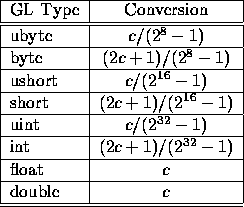
Figure 2.8: Processing of colors. n is the number of bits in a color index; m is the number of bits an R, G, B, or A component. See Table 2.6 for the interpretation of k.

Figure 2.8: Processing of colors.
n is the number of bits in a color index; m is the number of bits
an R, G, B, or A component. See Table 2.6 for
the interpretation of k.
Figure 2.8 diagrams the processing of colors before rasterization. Incoming colors arrive in one of several formats. Table 2.6 summarizes the conversions that take place on R, G, B, and A components depending on which version of the Color command was invoked to specify the components. As a result of limited precision, some converted values will not be represented exactly. In color index mode, a single-valued color index is not mapped.

Table 2.6: Component conversions.
Color, normal, and depth components, (c), are converted to an
internal floating-point representation, (f), using the equations in this
table.
All arithmetic is done in the internal floating point format.
These conversions apply to components specified as parameters to GL
commands and to components in pixel data.
The equations remain the same even if the implemented ranges of the GL data
types are greater than the minimum required ranges.
(Refer to table 2.2)
Next,
lighting,
if enabled,
produces a color.
If lighting is disabled,
the current color is used in further processing.
After lighting,
RGBA colors are clamped to the range  .
A color index is converted to fixed-point and then its integer portion
is masked (see section 2.13.6).
After clamping or masking,
a primitive may be flatshaded,
indicating that all vertices of the primitive are to have the same color.
Finally, if
a primitive is clipped, then colors (and texture coordinates) must
be computed at the vertices introduced or modified by clipping.
.
A color index is converted to fixed-point and then its integer portion
is masked (see section 2.13.6).
After clamping or masking,
a primitive may be flatshaded,
indicating that all vertices of the primitive are to have the same color.
Finally, if
a primitive is clipped, then colors (and texture coordinates) must
be computed at the vertices introduced or modified by clipping.